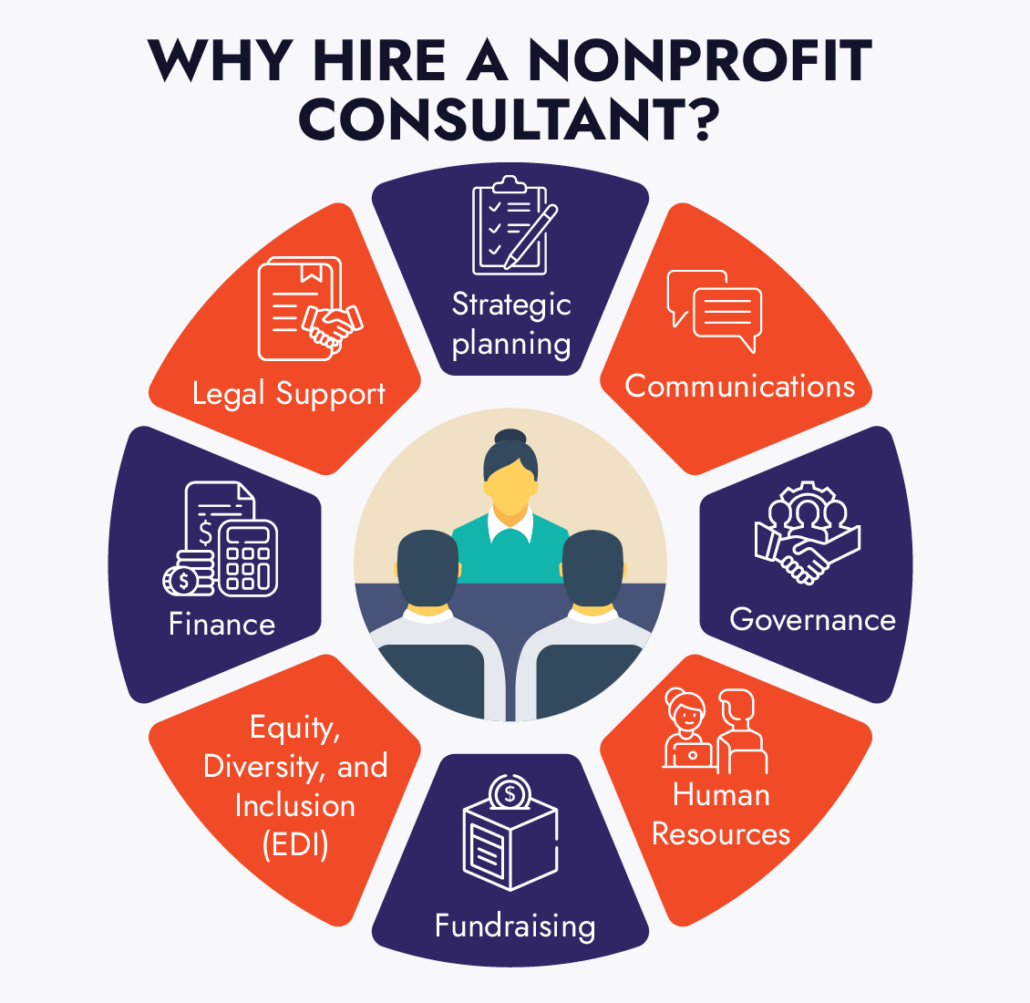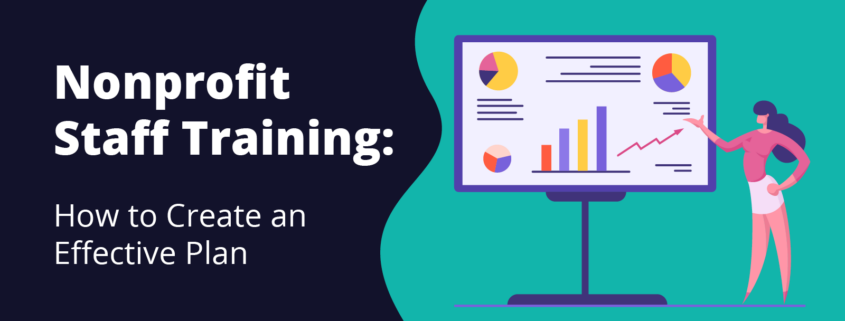Nonprofit Staff Training: How to Create an Effective Plan
According to an Independent Sector report, 48.5% of nonprofits increased their staff workloads to meet rising demands for services last year. Your nonprofit’s staff members have a lot on their plates. To continue making a difference, they must stay on top of fundraising initiatives, dedicate time to outreach, follow up with donors, and more.
As more community needs arise, it’s essential to equip your team with the tools, skills, and resources they need to streamline their roles and avoid burnout. One way to accomplish this is by creating a nonprofit staff training plan.
Having a deliberate training plan in place ensures that you stay on top of your staff’s learning needs and keep up with the latest best practices in the sector. Fortunately, there is a wealth of high-quality resources that you can offer to employees, from certification programs to online advice shared by nonprofit thought leaders. Let’s start by exploring exactly why staff training is so important to your nonprofit’s long-term success.
What are the benefits of nonprofit staff training?
Every member of your nonprofit’s team is a key contributor to your mission. Therefore, you need to hire and retain passionate, talented individuals who are capable of propelling you toward your goals. By investing in staff training, your organization can:
- Attract top candidates. The world of nonprofits is fast-paced, which might seem overwhelming to newcomers. They may be concerned that they’ll be left to their own devices in their roles and forced to adapt with minimal help. Having a training plan that you can mention in job descriptions can assuage their worries and inspire more exceptional job seekers to join your nonprofit.
- Improve employee engagement. Training your employees is an excellent way to demonstrate how much you value their contributions. As they learn and improve, they’ll feel more confident in their day-to-day responsibilities and proud of all that they accomplish for your nonprofit. The more competent they feel in their roles, the more likely they’ll be to stick around for the long term.
- Boost operational efficiency. Your staff members need to leverage various tools and work as a team to fulfill your nonprofit’s purpose, whether they’re providing services to beneficiaries or putting together reports to inform your strategic planning efforts. Staff training can streamline their workflows, improve their efficiency, and empower them to build stronger relationships with stakeholders.
- Increase its reputation. Developing a staff training plan demonstrates to your donors, volunteers, board of directors, and other community members that you’re committed to producing better outcomes for those you serve. This can increase your credibility and bring in more support for your cause.
Ultimately, the time and resources you devote to nonprofit staff training will shine through in the impact you make on your community.
How do you create a nonprofit staff training plan?
The specifics of a nonprofit staff training plan will differ depending on your mission, staff members, and priorities. For instance, you might be trying to promote more matching gifts and determine that you need to educate staff members on how to speak about these opportunities with donors. Or, you might have recently adopted a new software solution that you need to familiarize your employees with.
No matter what your priorities are, you can follow these four steps to put together an effective training plan of your own:
1. Identify staff training needs and topics.
Ensure that you’re directing your resources to the right areas by sending out a survey to your staff members upfront. Ask them to share which topics of knowledge or skills they would like to focus on to improve their performance in their roles. Additionally, consider creating assessments to evaluate your employees periodically and identify any gaps you need to address.
Think about the training needs of both your frontline staff members and managers. After all, your managers can significantly influence the productivity, motivation, and collaboration of your employees. To prepare them for managing effective teams, you may enroll them in a nonprofit management training program that covers best practices related to time management, communication, and delegation.
2. Promote staff training opportunities.
Use the insights you gather from your staff input and evaluations to provide a framework for the training resources you’ll offer. Then, promote several types of opportunities that appeal to a variety of learning preferences. Some employees may enjoy engaging with their peers in live, instructor-led classes while others may feel more comfortable with learning at their own pace.
Some popular staff training options include:
- Cohort-based classes. Enrolling your staff in online, cohort-based learning can boost their engagement and strengthen their bonds with team members. These classes are a wonderful way to learn from the expertise of a dedicated instructor and the knowledge of other peers in the sector in a structured format.
- Mentorships. Nurture a culture of learning at your nonprofit by creating a mentorship program. Pair newer hires with more experienced staff members so they can quickly develop the skills and best practices they need to thrive in their roles. Plus, these programs also help mentors refresh their knowledge and feel more confident in their leadership abilities.
- Conferences. Nonprofit conferences are ideal opportunities for convening with other professionals across the sector and sharing ideas on how you can better fulfill your missions in the current landscape. With topics ranging from fundraising to leadership, there’s bound to be an event that suits your staff’s training needs.
- Asynchronous courses. For employees who prefer a more flexible learning schedule, direct them to online courses that they can work through at their own speed. These courses are cost-effective and cover topics such as matching gifts and cybersecurity through educational videos, quizzes, and other activities. However, it may be more challenging for staff members to feel engaged when approaching training on their own.
Include a mixture of in-person and virtual training options to appeal to more of your employees’ needs and make it easy for them to participate.
3. Reach out to experts as needed.
If you’ve identified specific areas of your nonprofit’s operations in which your staff members need more in-depth, specialized training, consider approaching an expert for guidance. According to Laridae’s nonprofit consultants rundown, there are many professionals are committed to supporting nonprofits in a wide range of ways, including:

- Strategic planning
- Communications
- Governance
- Human resources (HR)
- Fundraising
- Equity, diversity, and inclusion (EDI)
- Finance
- Legal Support
Depending on their specialty, a nonprofit consultant can help your organization improve its training program or provide one-on-one coaching for individual contributors, such as your managers.
4. Recognize staff learning accomplishments.
While creating a thoughtful training plan is an important start, you can maximize staff participation and engagement by coming up with ways to recognize them for their learning accomplishments. eCardWidget’s employee recognition guide highlights the importance of acknowledging your staff members by pointing out that 92% of employees are likely to repeat a specific action if they’re recognized for it.
For example, when staff members complete a course or program, you could:
- Send congratulatory eCards.
- Post social media shout-outs.
- Host a celebration event.
- Present small gifts of branded merchandise.
Just as your nonprofit thanks its donors and volunteers for the role they play in your success, don’t forget to make your employees feel appreciated for the efforts they invest into fulfilling your mission.
As you implement your staff training plan, continue to collect feedback from your employees and conduct follow-up evaluations to identify ways you can improve moving forward. For example, you might determine that you need to share more podcasts if many of your staff members indicate that they prefer taking in information auditorily. By tailoring your training to your staff’s needs, you’ll ensure that they’ll get the most out of the resources you provide.

